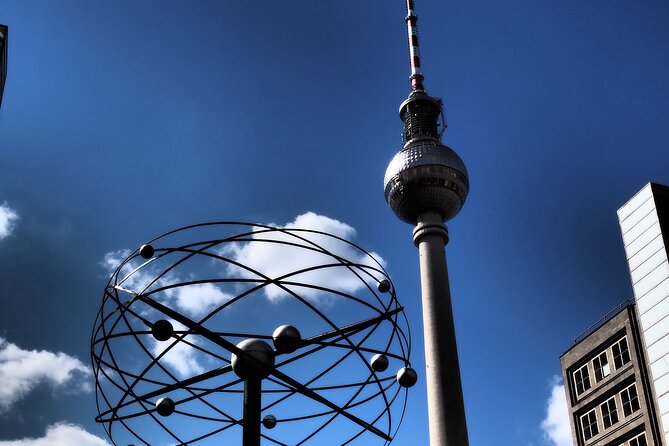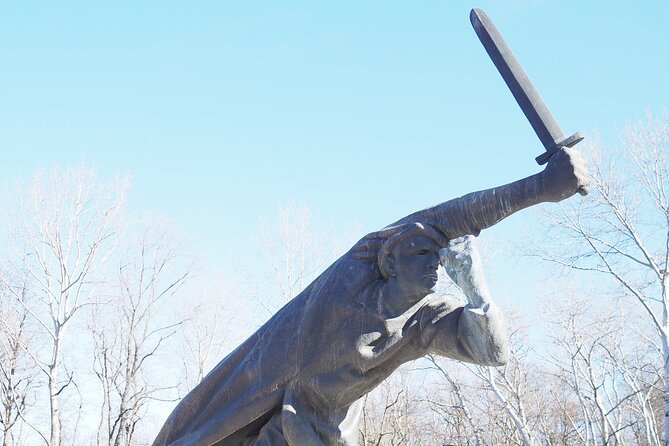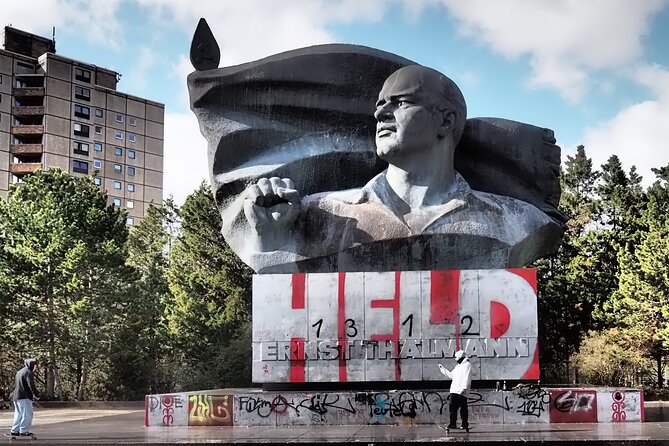Berlin’s 20th century journey was nothing short of extraordinary. The city witnessed the dramatic collapse of the German Empire, the rise of Nazism, and the division of the Cold War. Yet, through it all, Berlin proved its resilience, emerging as a symbol of change and reunification. From the erection of the infamous Berlin Wall to its iconic fall, this city’s transformative history is a captivating tale that begs to be explored. What lessons can we draw from Berlin’s past, and how might its future unfold? Dive in, and discover the remarkable story that defined a century.
Key Points

- Berlin transformed from the imperial capital of the German Empire to a divided city during the Cold War, reflecting broader European turmoil.
- The rise of Nazism in 1933 led to significant urban and social changes in Berlin, repressing democratic movements and diverse communities.
- The division of Berlin into East and West sectors after WWII made the city a focal point of Cold War tensions between capitalism and communism.
- The construction and fall of the Berlin Wall in 1961 and 1989 respectively symbolized the division and eventual reunification of Germany.
- The reunification of Germany after the collapse of the Berlin Wall initiated a complex process of political, economic, and cultural integration in Berlin.
Historical Context

Examining the historical context of 20th century Berlin paints a vivid picture of a city caught in the throes of momentous change.
From the fall of the German Empire and the rise of the Weimar Republic, to the reign of Nazi terror and the division of the city, Berlin witnessed some of the most consequential events that shaped the modern world.
Its transformation from an imperial capital to a divided metropolis at the heart of the Cold War reflects the turbulent forces that swept across Europe.
Understanding this backdrop is crucial to appreciating the full significance of Berlin’s journey through the tumultuous 20th century.
You can also read our reviews of more tours and experiences in Berlin.
Rise and Fall of the German Empire
The German Empire, born out of the ashes of the Napoleonic Wars, rose to prominence as a dominant force in continental Europe. Uniting the various German states under the leadership of the Prussian monarchy, the Empire thrived on industrialization, military prowess, and a burgeoning nationalism.
However, its unchecked ambition would ultimately lead to its downfall:
-
The arms race with neighboring powers, fueled by militaristic policies, drained resources and heightened international tensions.
-
The rigid social hierarchy and authoritarian rule stifled democratic aspirations, leading to unrest and political instability.
-
Disastrous decisions during World War I resulted in Germany’s defeat and the collapse of the imperial system.
-
The Treaty of Versailles imposed harsh terms, paving the way for the rise of extremism and the eventual outbreak of World War II.
Berlin’s Transformation Under Nazism

How did Berlin transform under the rise of Nazism in the early 20th century? The Nazi party’s ascent to power in 1933 brought sweeping changes to Berlin. Streets were adorned with swastika flags, rallies filled public spaces, and the Gestapo cracked down on dissent. Jewish-owned businesses were seized, and the once-vibrant cultural scene was stifled. Daily life became increasingly militarized and regimented. The table below illustrates some key changes to the city under Nazi rule:
| Aspect | 1933 | 1939 |
|---|---|---|
| Political | Democratic | Totalitarian |
| Economic | Mixed | State-controlled |
| Social | Diverse | Segregated |
| Cultural | Progressive | Repressed |
| Infrastructure | Modernizing | Militarizing |
This transformation would have lasting impacts on Berlin and its people for decades to come.
Division of Berlin and the Cold War

After the Nazi party’s rise to power transformed Berlin into a totalitarian, militarized state, the city would face an even greater upheaval in the decades that followed.
As the Allied powers emerged victorious from World War II, Berlin was divided into four sectors, each occupied by the US, Britain, France, and the Soviet Union. This division would soon harden into the iconic Berlin Wall, separating East and West Berlin for nearly 30 years.
The Cold War’s tension was palpable, as the city became a flashpoint in the global ideological struggle between capitalism and communism.
Nonetheless, Berliners on both sides of the divide found ingenious ways to maintain connections and resist the artificial barriers.
The Berlin Wall and Its Impact

Erected in 1961, the Berlin Wall stood as a stark symbol of the division between East and West during the Cold War era.
For 28 years, it divided the city, separating families and friends. Attempting to cross the heavily fortified barrier was a perilous endeavor, with many losing their lives in the process.
Yet, the Wall’s eventual fall in 1989 represented a momentous triumph for freedom and democracy. Its collapse sparked celebrations across the globe and paved the way for German reunification.
Today, remnants of the Wall serve as a sobering reminder of a tumultuous past and the power of the human spirit to overcome even the most daunting of obstacles.
- Discover Berlin Half-Day Walking Tour
- Sachsenhausen Concentration Camp Memorial Tour From Berlin
- Explore Berlins Top Attractions 3-hour English Walking Tour
- Third Reich Berlin: Hitler and WWII Walking Tour
- Sachsenhausen Concentration Camp Memorial Tour With Max 15 People
- Visit to the Sachsenhausen Concentration Camp
Reunification of Germany

The fall of the Berlin Wall in 1989 marked the beginning of a new era for Germany.
After decades of division, the country was reunited, and the process of reunification began. This momentous event had profound implications, both politically and economically.
Here are 4 key aspects of the reunification of Germany:
-
Political Integration: The integration of the two political systems, the East German communist regime and the West German democratic system, was a complex and challenging process.
-
Economic Unification: Merging the East and West German economies was a daunting task, with significant disparities in infrastructure, productivity, and living standards.
-
Cultural Reconciliation: Bridging the gap between the distinct cultural identities of East and West Germany was crucial for a successful reunification.
-
Social Challenges: The reunification brought about significant social upheaval, including unemployment, housing shortages, and demographic shifts.
Remembering 20th Century Berlin

Berlin’s tumultuous 20th century left an indelible mark on the city, with powerful symbols and sites that continue to captivate visitors from around the world. From the imposing remnants of the Berlin Wall to the emotional Memorial to the Murdered Jews of Europe, these landmarks tell a story of a city that endured unimaginable hardship and division, yet emerged resilient and united. Exploring 20th century Berlin is a poignant and thought-provoking experience, allowing visitors to bear witness to the triumphs and tragedies that forever shaped this iconic European destination.
| Landmark | Significance |
|---|---|
| Berlin Wall | Symbol of division and oppression |
| Memorial to the Murdered Jews of Europe | Solemn tribute to victims of the Holocaust |
| Reichstag Building | Witness to the rise and fall of the German Empire |
| Potsdamer Platz | Embodiment of Berlin’s post-reunification transformation |
| Charlottenburg Palace | Reminder of Prussia’s regal past |
Recap

The tumultuous 20th century witnessed Berlin’s dramatic transformation, from the fall of the German Empire to the symbolic fall of the Berlin Wall. This city’s resilience and historical significance as a center of change were truly remarkable. As Germany reunited, Berlin emerged as a symbol of triumph over division, a testament to the power of unity and the enduring spirit of the human experience.
More Tour Reviews in Berlin
Not for you? Here's more things to do in Berlin we have recnetly reviewed
- 5 Best Craft Beer Tours And Tastings In Berlin
- 3 Best Shopping Tours In Berlin
- 7 Best Christmas Experiences In Berlin
- 16 Best Dining Experiences In Berlin
- 2 Best 2 Day Tours In Berlin
- 4 Best Lunch Experiences In Berlin
- 2 Best Full-Day Tours In Berlin
- 15 Best Photography Experiences In Berlin
- 12 Best Dinner Tours In Berlin
- 25 Best Cruises And Boat Tours In Berlin
- 25 Best Food Tours In Berlin
- Third Reich Quest Experience in Berlin
